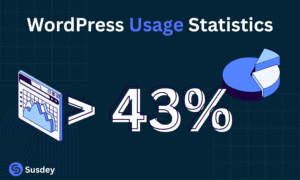WordPress powers over 40% of all websites on the internet, making it the most popular content management system in the world. Its widespread use shows how important WordPress is for businesses, bloggers, and developers looking to create websites efficiently.
People from many different backgrounds use WordPress, from small business owners to large enterprises. The platform offers thousands of plugins and themes that help users customize their sites to fit specific needs, which has contributed to its strong growth.
Understanding WordPress statistics can help users and businesses make better decisions about website design, security, and performance. These numbers also reveal trends that impact the future of web development with WordPress.
WordPress Key Statistics
- WordPress powers about 43.5% of all websites worldwide.
- Over 455 million websites run on WordPress.
- WordPress leads with more than 65% of the CMS market share.
- About 40% of WordPress sites belong to small and medium enterprises.
- WordPress is most popular in the United States, powering more than 35% of all websites in the US.
- About 70% of active WordPress sites use at least one plugin.
- There are over 60000 plugins available in the WordPress plugins directory.
- There are over 8,000 themes are actively maintained in the official theme directory.
What is WordPress Global Market Share?
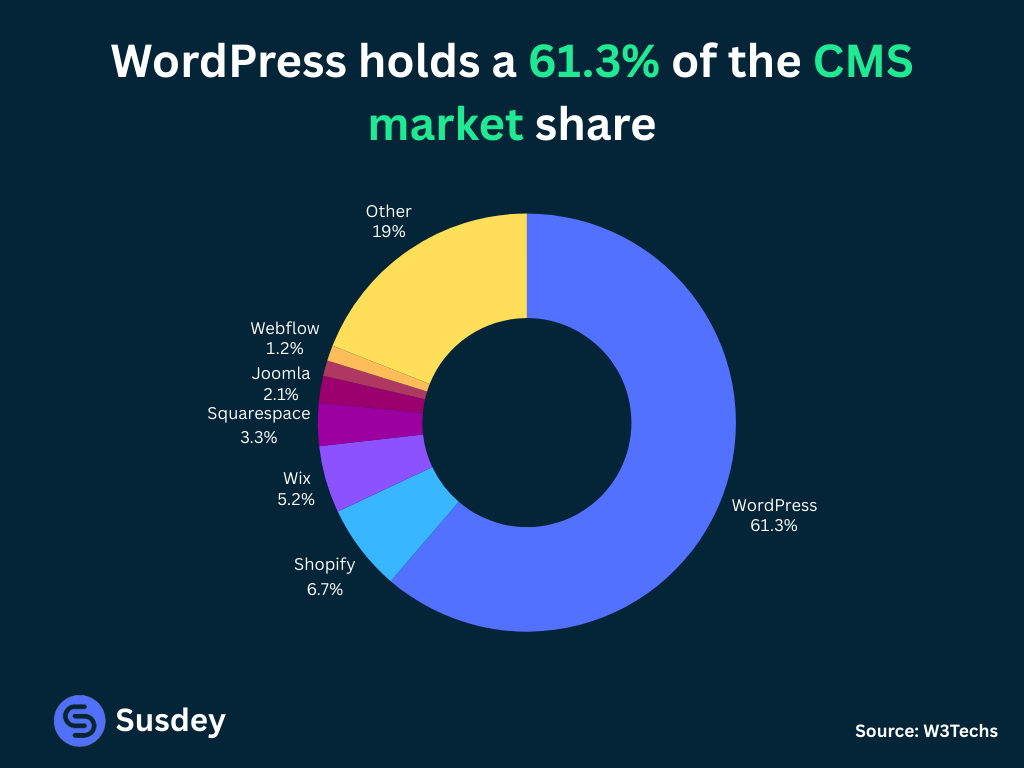
WordPress leads with more than 61.3% of the CMS market share. This dominance comes from its ease of use, customization options, and broad community support. Businesses, bloggers, and developers prefer WordPress for varied needs, making it the most chosen CMS globally.
WordPress maintains a dominant lead in the CMS market, far ahead of its closest competitors—Shopify and Wix, which hold just 6.7% and 5.2% market share, respectively.
Notably, 29% of websites operate without a known CMS, reflecting diverse development methods. However, among those that do use a CMS, WordPress stands out as the clear leader.
Source: W3Techs
How Many Websites Use WordPress in 2025?
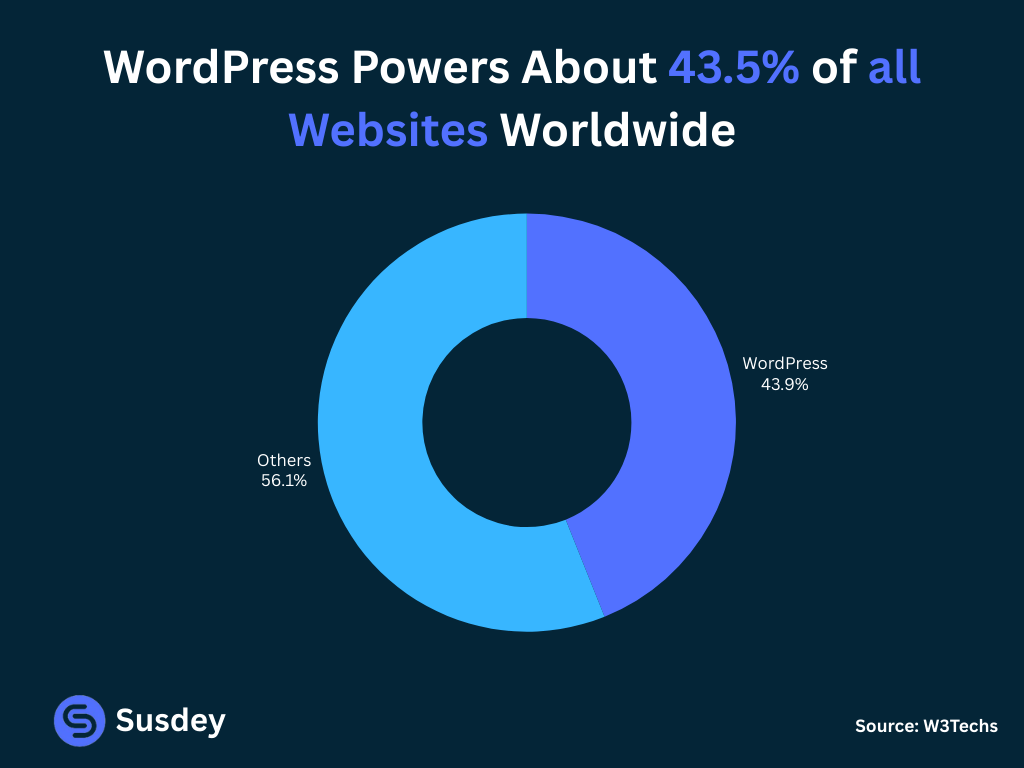
WordPress powers about 43.5% of all websites, with over 455 million websites run on WordPress worldwide. This means nearly half of all sites use WordPress in some form.
Its popularity surpasses other CMS (content management systems) like Shopify and Joomla. These include blogs, corporate sites, e-commerce stores, and news portals.
Many top brands like The New Yorker, BBC America, and Microsoft News use WordPress for their web presence. Its flexible design allows for both simple and complex sites.
WordPress also supports more than half of the top 1 million websites, showing trust from high-traffic and high-profile sites.
Source: W3Techs
WordPress Historical Growth Trends
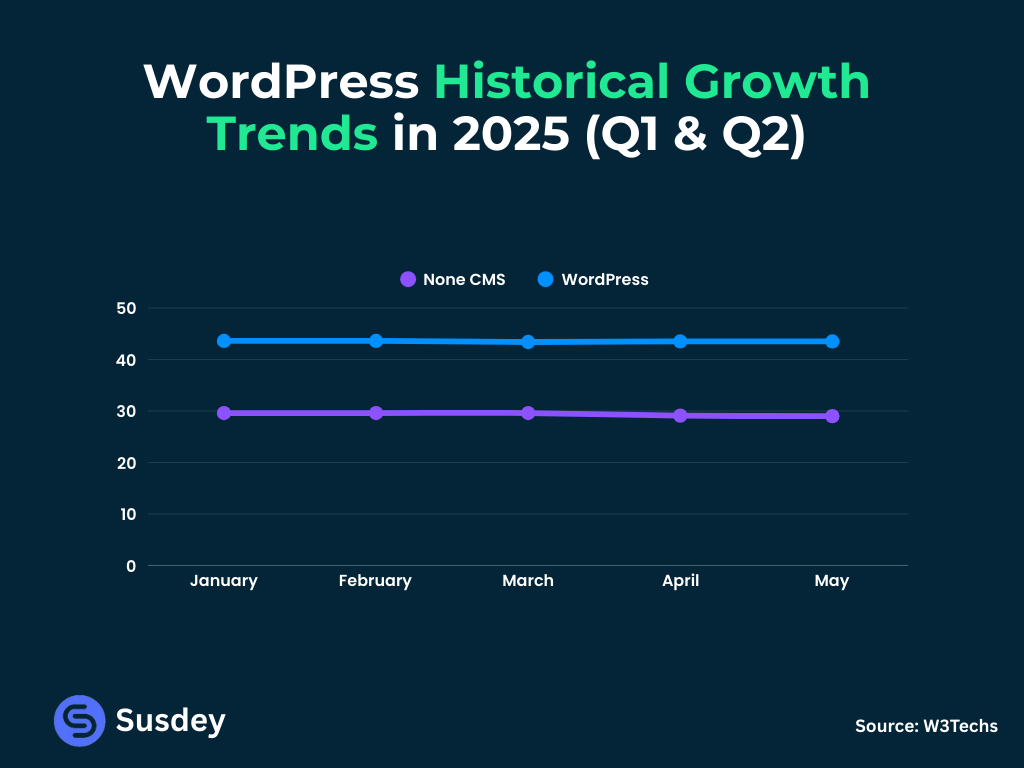
Since its launch in 2003, WordPress has steadily grown year after year. In 2010, fewer than 10% of websites used WordPress. Today, it is more than four times that amount.
The rise of mobile devices and content creation tools added to WordPress’s growth. New features, themes, and plugins continuously improve the platform.
This steady increase suggests WordPress will keep expanding its user base and capabilities shortly.
Source: W3Techs
WordPress User Demographics
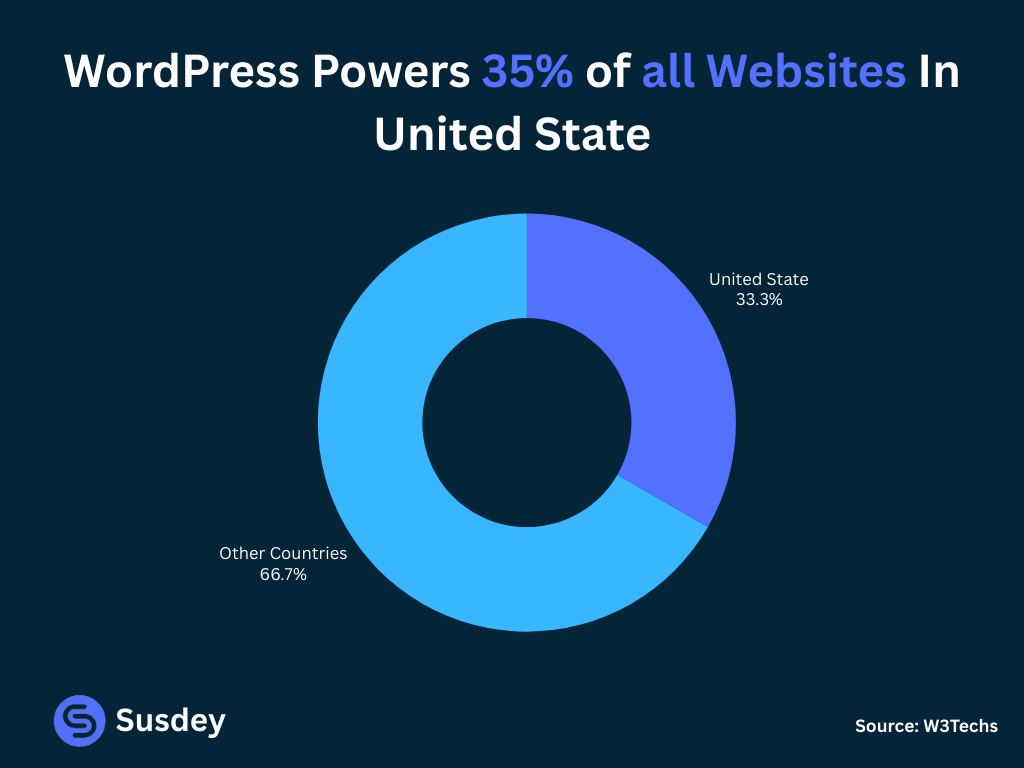
WordPress users vary widely by location and by how they choose to use the platform. Many countries have strong WordPress communities, and the platform serves both businesses and individuals in different ways.
WordPress is most popular in the United States, where it accounts for more than 35% of all websites. Europe also has a large WordPress user base, with countries like Germany, the United Kingdom, and France leading in adoption.
Asia is growing rapidly in WordPress usage, especially in India and Japan. Latin America and Africa show steady increases as more users move online.
This global spread reflects WordPress’s ability to support multiple languages and local content, making it appealing in diverse markets.
Source: Builtwith
Business vs. Personal WordPress Usage
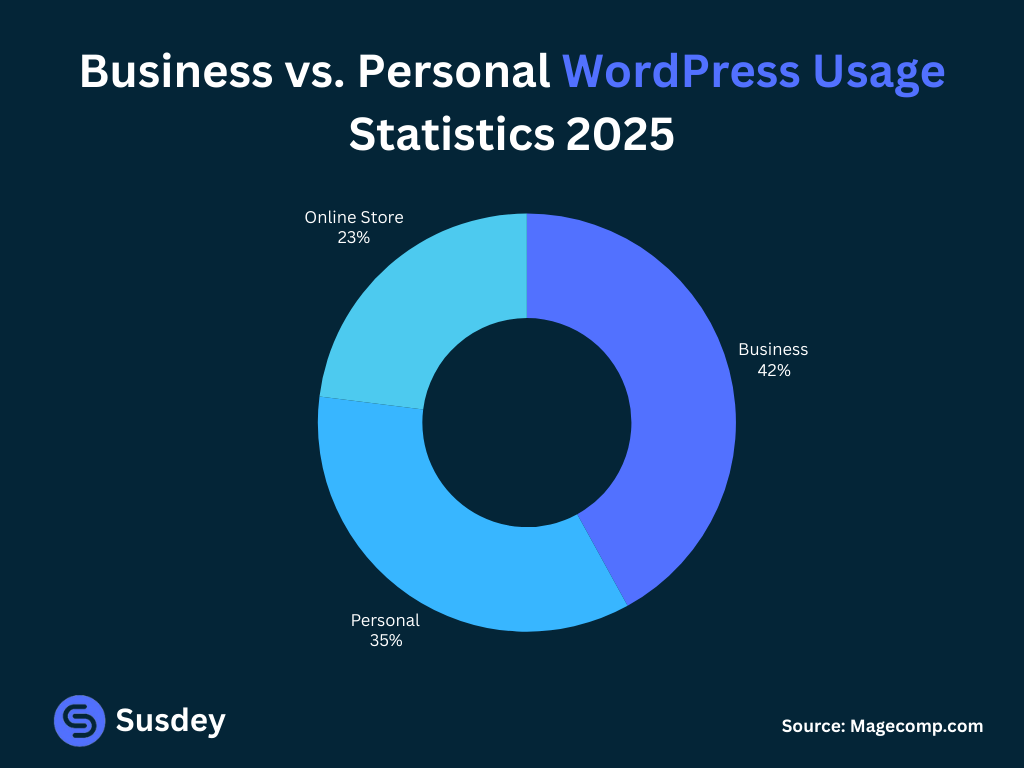
Many businesses use WordPress for websites to promote products and services. About 42% of WordPress sites belong to small and medium enterprises. These sites often include e-commerce features, blogs, and customer support tools.
On the other hand, individuals and hobbyists use WordPress to create personal blogs, portfolios, or non-commercial websites. Around 60% of WordPress sites serve this group.
This balance shows how WordPress is flexible enough for both professional and personal needs.
Source: Magecomp.com
WordPress Plugin Statistics
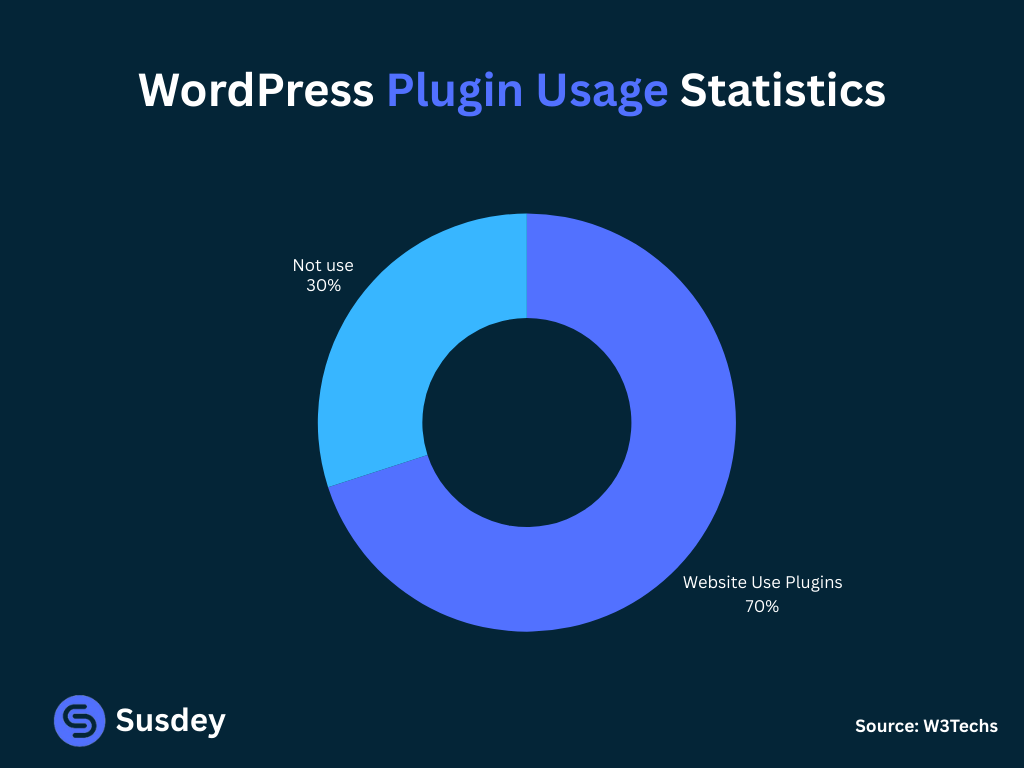
As of May 2025, the official WordPress Plugin Directory hosts over 60,000 plugins. These plugins serve different purposes, like SEO, security, social media, and performance optimization.
About 70% of active WordPress sites use at least one plugin. Many sites rely on 10 or more plugins to add necessary features.
Plugins range from simple tools to complex ones, offering full site management functions. Regular updates and compatibility checks keep plugins secure and functional.
Popular Plugins and Their Usage
Some plugins are especially popular because they are reliable and easy to use. Top plugins include:
- Yoast SEO: Used by over 5 million active sites for search engine optimization.
- WooCommerce: Powers more than 5 million online stores, making it the leading eCommerce plugin.
- Akismet: Helps filter spam comments on millions of blogs and websites.
- Elementor: A page builder used by over 5 million sites to design custom layouts easily.
These plugins often have free and paid versions. Many users choose them to improve site performance and user experience.
WordPress Theme Statistics
WordPress offers thousands of free and premium themes. As of 2025, over 8,000 themes are actively maintained in the official theme directory.
The most popular themes, like Astra, GeneratePress, and OceanWP, each have more than 1 million active installs. Users prefer these themes for speed, flexibility, and ease of customization.
Themes vary from simple blogs to complex business sites. Around 40% of WordPress sites use themes designed for multipurpose use, balancing design and functionality.
Many themes now focus on mobile responsiveness and compatibility with page builders to meet modern user needs.
Security and Performance Trends
WordPress sites frequently face security risks due to outdated software and weak configurations. Performance is also a concern because slow loading times affect user experience and search rankings.
These issues are tied closely to site maintenance and the specific vulnerabilities common to WordPress environments.
Common Vulnerabilities
WordPress is a target for hackers because it powers over 40% of websites. The most common vulnerabilities include plugin flaws, theme issues, and outdated core software. Attackers often exploit these to inject malware or gain unauthorized access.
SQL injection and cross-site scripting (XSS) are frequent attacks. Plugins with poor coding increase risks. Many sites run plugins that are no longer supported or updated, making them weak points.
Weak passwords and a lack of two-factor authentication also lead to security breaches. Regular security scans help detect vulnerabilities early, reducing the chance of serious harm.
Update and Maintenance Rates
Regular updates are crucial for WordPress security and speed. However, studies show that nearly 30% of WordPress sites do not update their core software promptly. Updates patch security holes and improves performance.
Plugin and theme updates are less consistent. Many site owners delay or skip these updates, risking compatibility issues and attacks. Sites that update regularly load faster and handle traffic spikes better.
Maintenance tasks like database cleanup and caching setup improve performance. Automation tools that handle updates and backups can increase update rates and reduce errors.
WordPress Ecosystem Revenue
The WordPress ecosystem brings in billions of dollars each year. This includes revenue from hosting providers, premium themes, plugins, and third-party services. Hosting companies like Bluehost and SiteGround earn a large share by offering WordPress-specific plans.
Theme and plugin developers also make significant income by selling tools that enhance website functionality. For example, popular plugins like WooCommerce power millions of online stores, contributing to e-commerce growth.
This financial activity helps support small businesses and larger firms alike. It also drives continuous innovation within the WordPress community.
